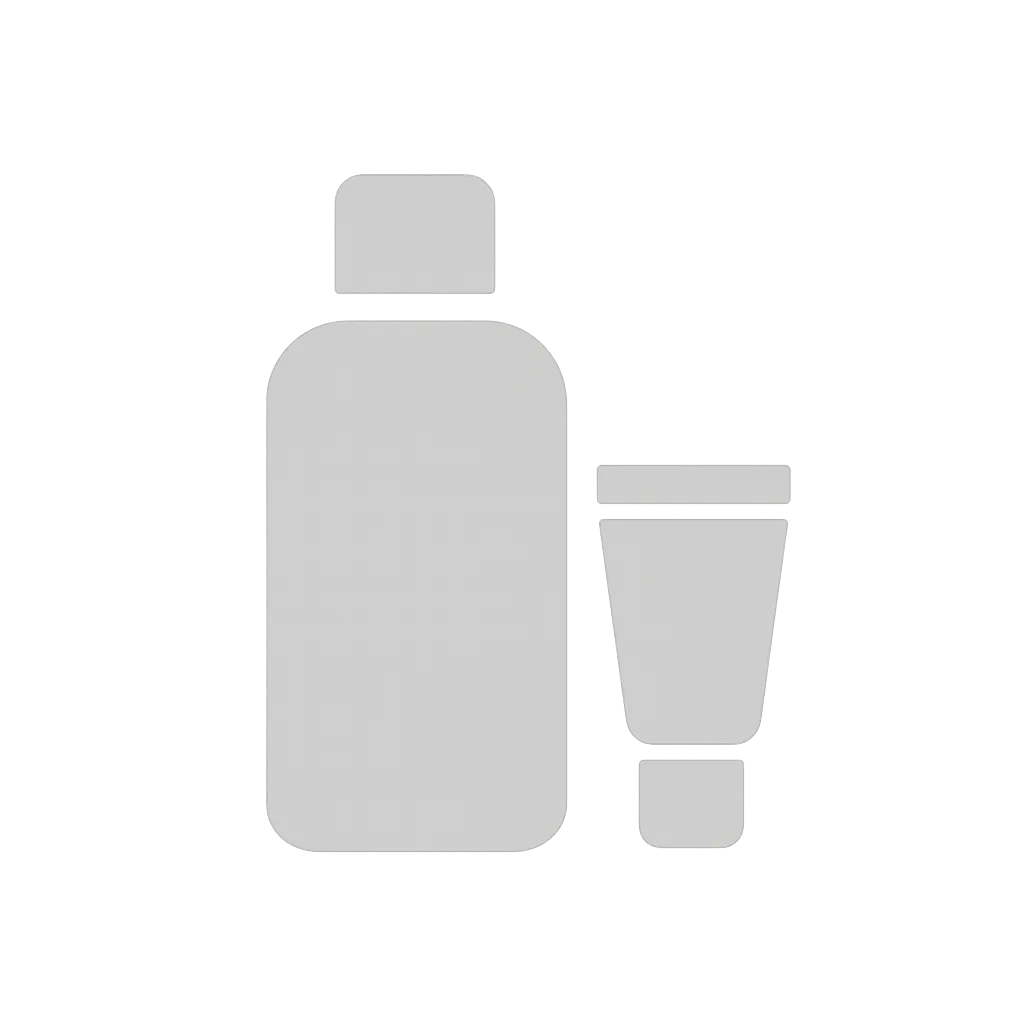What's inside
What's inside
 Key Ingredients
Key Ingredients

 Benefits
Benefits

 Concerns
Concerns

No concerns
 Ingredients Side-by-side
Ingredients Side-by-side

Butylene Glycol
HumectantWater
Skin ConditioningDextran
Acetyl Tetrapeptide-3
Skin ProtectingTrifolium Pratense Flower Extract
AstringentPropanediol
SolventArginine
MaskingGlycine Soja Germ Extract
EmollientTriticum Vulgare Germ Extract
Skin ConditioningScutellaria Baicalensis Root Extract
AstringentSodium Benzoate
MaskingGluconolactone
Skin ConditioningCalcium Gluconate
HumectantGlycerin
HumectantPPG-26-Buteth-26
Skin ConditioningPEG-40 Hydrogenated Castor Oil
EmulsifyingApigenin
AntioxidantOleanolic Acid
Skin ConditioningBiotinoyl Tripeptide-1
Pisum Sativum Sprout Extract
Skin ConditioningIsomalt
HumectantSodium Metabisulfite
AntioxidantLarix Europaea Wood Extract
HumectantGlycine
BufferingZinc Chloride
AntimicrobialCamellia Sinensis Leaf Extract
AntimicrobialXylitylglucoside
HumectantAnhydroxylitol
HumectantXylitol
HumectantSaccharide Isomerate
HumectantSanguisorba Officinalis Root Extract
CleansingSerenoa Serrulata Fruit Extract
Skin ConditioningCapryloyl Glycine
CleansingPhenoxyethanol
PreservativeEthylhexylglycerin
Skin ConditioningCitric Acid
BufferingSodium Citrate
BufferingButylene Glycol, Water, Dextran, Acetyl Tetrapeptide-3, Trifolium Pratense Flower Extract, Propanediol, Arginine, Glycine Soja Germ Extract, Triticum Vulgare Germ Extract, Scutellaria Baicalensis Root Extract, Sodium Benzoate, Gluconolactone, Calcium Gluconate, Glycerin, PPG-26-Buteth-26, PEG-40 Hydrogenated Castor Oil, Apigenin, Oleanolic Acid, Biotinoyl Tripeptide-1, Pisum Sativum Sprout Extract, Isomalt, Sodium Metabisulfite, Larix Europaea Wood Extract, Glycine, Zinc Chloride, Camellia Sinensis Leaf Extract, Xylitylglucoside, Anhydroxylitol, Xylitol, Saccharide Isomerate, Sanguisorba Officinalis Root Extract, Serenoa Serrulata Fruit Extract, Capryloyl Glycine, Phenoxyethanol, Ethylhexylglycerin, Citric Acid, Sodium Citrate
Minoxidil 2%
Alcohol
AntimicrobialPropylene Glycol
HumectantWater
Skin ConditioningCocamidopropyl Betaine
CleansingLauric Acid
CleansingDecyl Glucoside
CleansingParfum
MaskingSodium Chloride
MaskingDisodium Cocoamphodiacetate
CleansingGlycerin
HumectantGlycol Distearate
EmollientPotassium Hydroxide
BufferingGuar Hydroxypropyltrimonium Chloride
Skin ConditioningPEG-120 Methyl Glucose Dioleate
EmulsifyingXylitol
HumectantLactitol
HumectantGlyceryl Oleate
EmollientCoco-Glucoside
CleansingPolyquaternium-67
Laureth-4
EmulsifyingChlorphenesin
AntimicrobialCitric Acid
BufferingLactic Acid
BufferingSodium Acetate
BufferingSerenoa Serrulata Fruit Extract
Skin ConditioningLinalool
PerfumingIsopropyl Alcohol
SolventPhenoxyethanol
PreservativeTocopherol
AntioxidantBenzoic Acid
MaskingDehydroacetic Acid
PreservativeHydrogenated Palm Glycerides Citrate
EmollientLecithin
EmollientAscorbyl Palmitate
AntioxidantMinoxidil 2%, Alcohol, Propylene Glycol, Water, Cocamidopropyl Betaine, Lauric Acid, Decyl Glucoside, Parfum, Sodium Chloride, Disodium Cocoamphodiacetate, Glycerin, Glycol Distearate, Potassium Hydroxide, Guar Hydroxypropyltrimonium Chloride, PEG-120 Methyl Glucose Dioleate, Xylitol, Lactitol, Glyceryl Oleate, Coco-Glucoside, Polyquaternium-67, Laureth-4, Chlorphenesin, Citric Acid, Lactic Acid, Sodium Acetate, Serenoa Serrulata Fruit Extract, Linalool, Isopropyl Alcohol, Phenoxyethanol, Tocopherol, Benzoic Acid, Dehydroacetic Acid, Hydrogenated Palm Glycerides Citrate, Lecithin, Ascorbyl Palmitate
 Reviews
Reviews

Ingredients Explained
These ingredients are found in both products.
Ingredients higher up in an ingredient list are typically present in a larger amount.
Citric Acid is an alpha hydroxy acid (AHA) naturally found in citrus fruits like oranges, lemons, and limes.
Like other AHAs, citric acid can exfoliate skin by breaking down the bonds that hold dead skin cells together. This helps reveal smoother and brighter skin underneath.
However, this exfoliating effect only happens at high concentrations (20%) which can be hard to find in cosmetic products.
Due to this, citric acid is usually included in small amounts as a pH adjuster. This helps keep products slightly more acidic and compatible with skin's natural pH.
In skincare formulas, citric acid can:
While it can provide some skin benefits, research shows lactic acid and glycolic acid are generally more effective and less irritating exfoliants.
Most citric acid used in skincare today is made by fermenting sugars (usually from molasses). This synthetic version is identical to the natural citrus form but easier to stabilize and use in formulations.
Read more about some other popular AHA's here:
Learn more about Citric AcidGlycerin is already naturally found in your skin. It helps moisturize and protect your skin.
A study from 2016 found glycerin to be more effective as a humectant than AHAs and hyaluronic acid.
As a humectant, it helps the skin stay hydrated by pulling moisture to your skin. The low molecular weight of glycerin allows it to pull moisture into the deeper layers of your skin.
Hydrated skin improves your skin barrier; Your skin barrier helps protect against irritants and bacteria.
Glycerin has also been found to have antimicrobial and antiviral properties. Due to these properties, glycerin is often used in wound and burn treatments.
In cosmetics, glycerin is usually derived from plants such as soybean or palm. However, it can also be sourced from animals, such as tallow or animal fat.
This ingredient is organic, colorless, odorless, and non-toxic.
Glycerin is the name for this ingredient in American English. British English uses Glycerol/Glycerine.
Learn more about GlycerinPhenoxyethanol is a preservative that has germicide, antimicrobial, and aromatic properties. Studies show that phenoxyethanol can prevent microbial growth. By itself, it has a scent that is similar to that of a rose.
It's often used in formulations along with Caprylyl Glycol to preserve the shelf life of products.
We don't have a description for Serenoa Serrulata Fruit Extract yet.
Water. It's the most common cosmetic ingredient of all. You'll usually see it at the top of ingredient lists, meaning that it makes up the largest part of the product.
So why is it so popular? Water most often acts as a solvent - this means that it helps dissolve other ingredients into the formulation.
You'll also recognize water as that liquid we all need to stay alive. If you see this, drink a glass of water. Stay hydrated!
Learn more about WaterXylitol is a humectant and prebiotic. It can help with dry skin.
In studies, xylitol has been shown to improve dry skin. It decreased transepidermal water loss, or when water passes through the skin and evaporates. Xylitol also showed to help improve the biomechanical properties of the skin barrier.
The prebiotic property of xylitol may also help reinforce our skin's natural microbiome. Having a healthy microbiome prevents infection by bad bacteria and helps with hydration.
As a humectant, Xylitol helps draw moisture from both the air and from deeper skin layers. This helps keep skin hydrated.
Xylitol is a sugar alcohol and commonly used as a sugar substitute. It is naturally occurring in plants such as strawberries and pumpkin.
Learn more about Xylitol